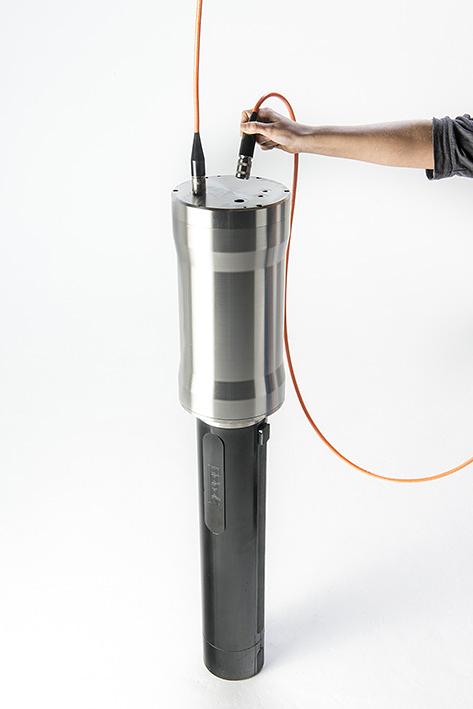What we do
Adrok is a subsurface explorer for natural resources and minerals critical to the world's transitions to net zero. Our goal is to make the world a better place by better understanding what lies beneath the earth surface. Increasing subsurface quantification and reducing geological uncertainty.
Adrok identifies, precisely, minerals and liquids, saving huge drilling exploration expenses.
We are the pioneers of quantifying the subsurface by digitally drilling virtual borehole measurements.
Adrok’s mission is clear: Revolutionize the way the world finds and extracts its resources—with minimal environmental impact and maximum efficiency.
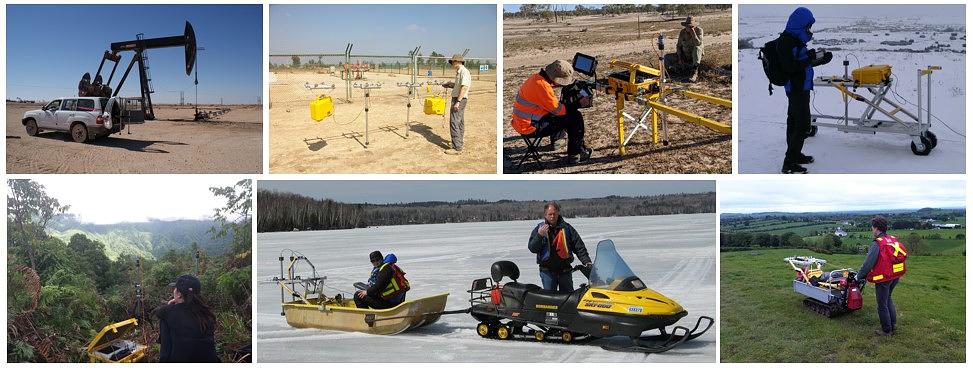
Brochure
Download our company brochure to find out more about our Next Generation Exploration technology and services that help mining and energy companies find subsurface natural resources.

Capabilities
We aim to help our clients increase their exploration success. Our unique, multi-talented team includes geologists and geoscientists with plenty of industry experience. Our solutions inspire knowledgeable decisions. We work hard to help our clients reduce exploration risk and increase exploration value. Our Predrilling Virtual Logging® services help save our clients money, time, energy and are non-invasively kind to the environment. Identifying and delineating viable deposits by forensically decoding millions of years of subsurface geological activity. Sustainably Extending Resources Life™ .
Our technology produces high-definition m scale resolution at km scale depth to help accurately identify subsurface composition using our spectrometric analysis techniques.
Digitally drilling into the subsurface is the future of ecofriendly exploration. Adrok are market-driven and scientifically gudied to better inform our customers.
Let's discover together.
If you want to discover new things, you either need to look in new places or try new methodologies.
Adrok offers comprehensive support throughout the entire exploration process, from initial consultation and survey design to data analysis and reporting. The company’s client-focused approach ensures that solutions are customized to meet the unique requirements of each project.
We have a proven track record with successful projects across the globe. The company’s extensive experience in various geological settings ensures reliable and effective solutions tailored to your specific needs.
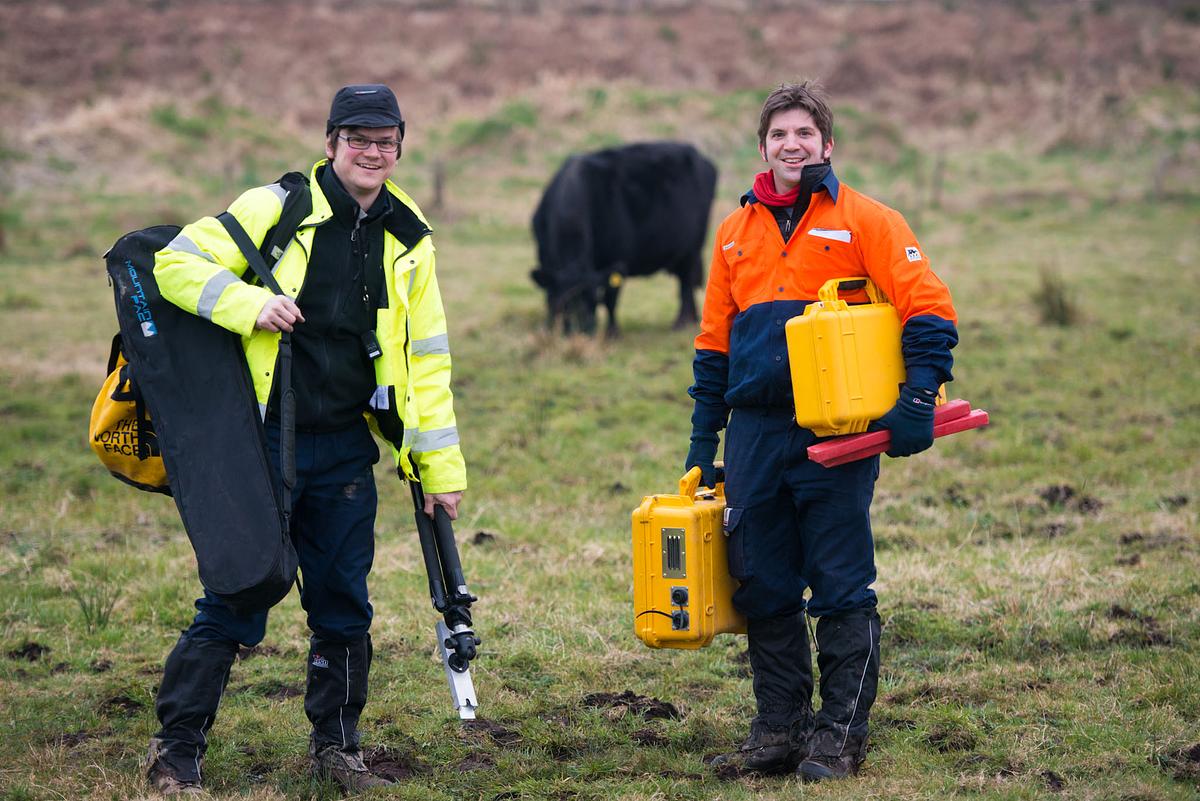
How Adrok finds...
Critical Metals
Adrok’s proprietary Atomic Dielectric Resonance (ADR) technology is a polymetallic detector. ADR can play a pivotal role in the search for critical metals by offering:
- High-Resolution Subsurface Imaging: Precisely map geological formations to identify potential critical metal deposits.
- Non-Invasive Exploration: Minimize environmental impact while efficiently locating mineral-rich zones.
- Rapid Data Acquisition: Provide timely insights to accelerate the decision-making process in exploration projects.
- Cost-Effective Solutions: Reduce the need for extensive drilling and sampling, lowering overall exploration costs.
- Versatile Applications: Applicable across various stages of mining exploration, from initial surveys to detailed assessments and extending life of mine surveys.
By integrating Adrok’s advanced ADR technology into your exploration strategy, you can enhance the accuracy, efficiency, and sustainability of locating critical metals essential for the energy transition.
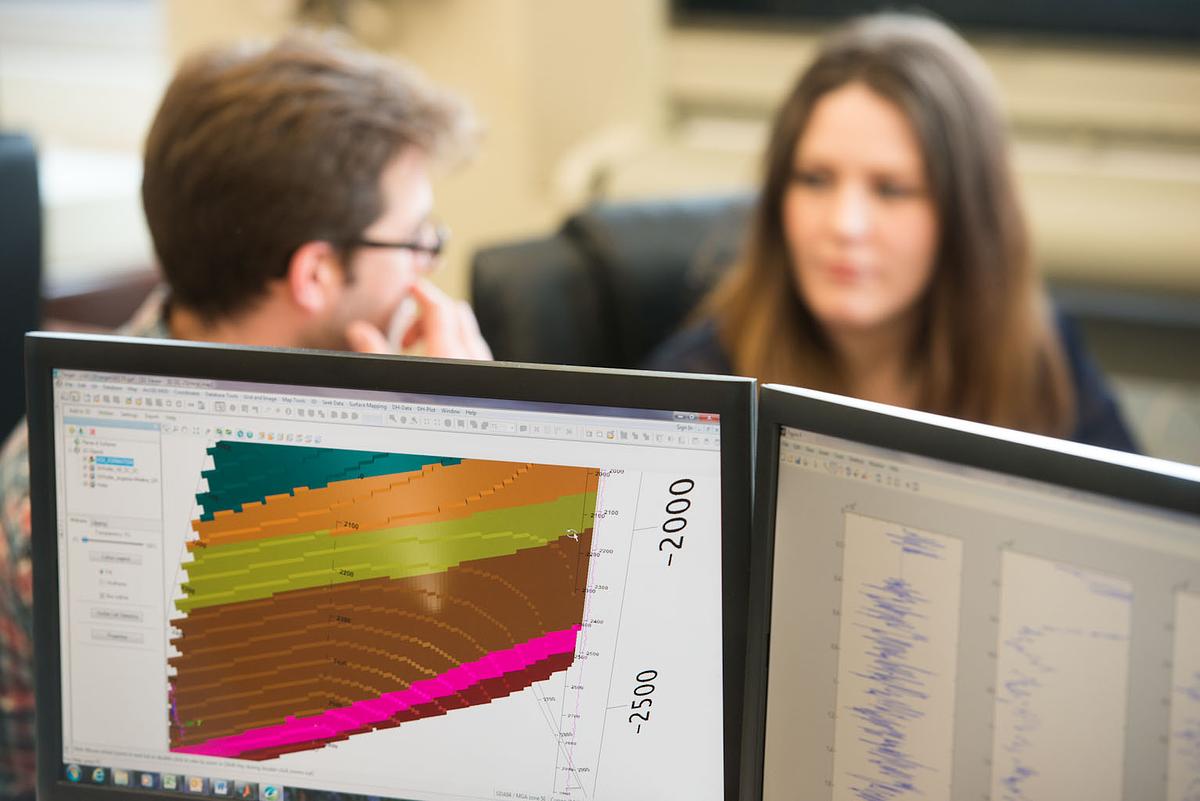
Sulphide Mineralisation
Adrok are perfecting its capabilities to find subsurface sulphides. Like magnetic susceptibility, conductivity and density, relative dielectric permittivity (Ɛᵣ) is a characteristic of rocks and minerals that can be used to discriminate between them using the right geophysical instrumentation. This unique rock and mineral property (i.e. Ɛᵣ) forms the founding physical principals behind Adrok's deep penetrating pulsed radar equipment and how the technology can help target different materials beneath the surface. Other measurements that are great for sulphides are:
(1) Reflected energy
Works well for massive sulfides including deposit styles: Orogenic narrow vein massive sulfide and gold -NI-PGE/layered mafic hosted -Some VHMS/VMS
(2) Changes in Energy and Frequency
Adrok have been working on its library of measured geophysical properties of the rocks beneath the surface to develop a method of providing explorers with the confidence to drill sulfide targets at depth. This extensive library includes orebodies of different types and from around the world.
Harmonic results over greater thicknesses (~>10m): Disseminated sulfides including deposit styles: Porphyry, -SEDEX, some VHMS/VMS, MVT

Groundwater and Deep Aquifers
Adrok’s Atomic Dielectric Resonance (ADR) technology offers a groundbreaking solution for identifying new freshwater sources globally.
Adrok is developing precision targeting for Aquifers up to and over 1000m depth, depending on overlying geology.
The ADR tool is a direct targeting tool whereby the Dielectric Permittivity (DC) of rocks within a vertical sequence is measured. Water has a DC of 80, whereas rocks have a DC of 5 to 30. ADR can be used to differentiate water-rich aquifers by exploiting this difference in Dielectric Permittivity.
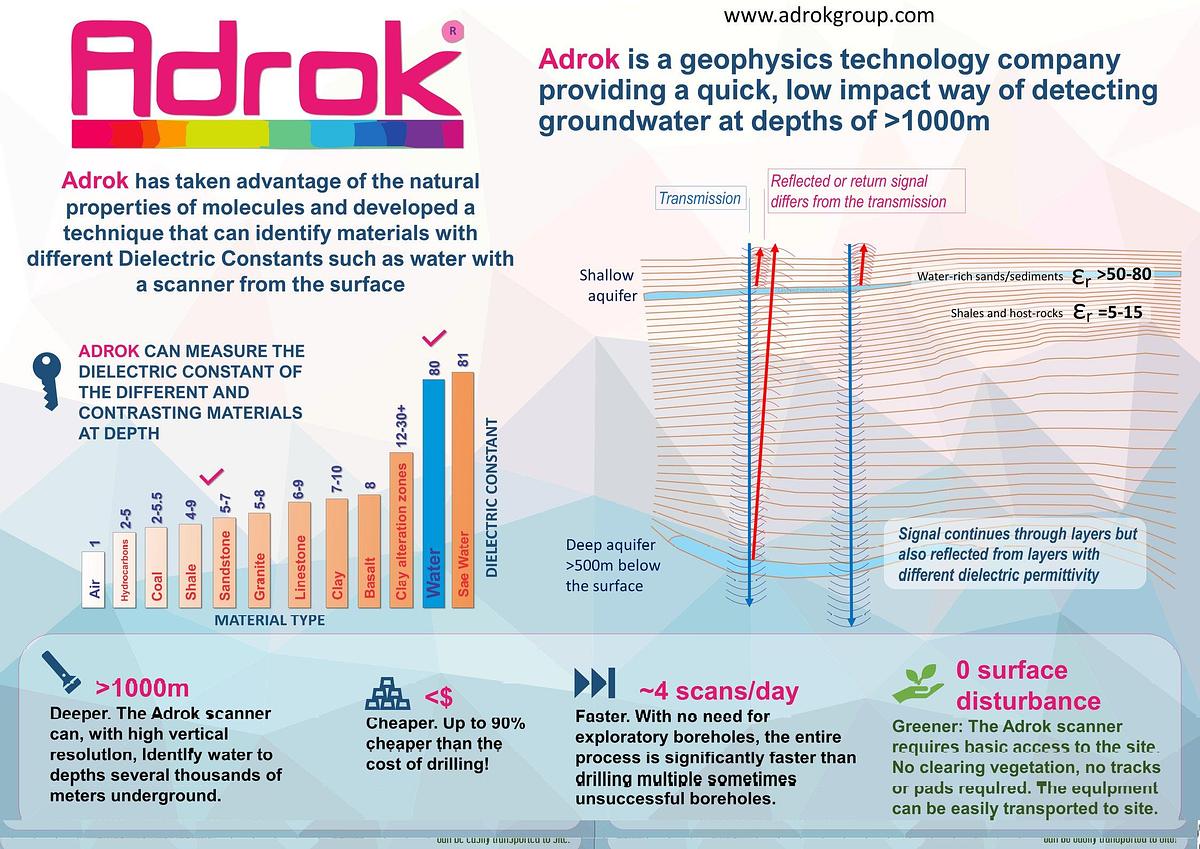
The Challenge of Finding New Freshwater Sources For decades, we relied on rivers, lakes, and shallow aquifers. Today, these are under pressure from overuse, pollution, and climate-driven variability. As a result, the search for new water sources is pushing science and technology into uncharted territory:
- Deeper groundwater exploration: Locating fossil aquifers or untapped reserves is technically complex, expensive, and raises questions about long-term sustainability.
- Desalination: Converting seawater into freshwater is growing, but energy intensity, brine disposal, and cost remain barriers.
- Atmospheric water harvesting: Capturing humidity and fog is promising but still niche and difficult to scale.
- Water reuse & recycling: Transforming wastewater into potable water is a proven technology, but adoption often lags due to regulation and public perception.
Solving freshwater scarcity is not optional—it is existential. Leaders in government, business, and technology must reframe water not as an abundant commodity but as a strategic resource.
Adrok’s ADR technology is transforming how we locate freshwater sources. Unlike traditional drilling, ADR uses deep-penetrating electromagnetic signals to map subsurface layers with precision. It can identify aquifers, rock types, and even estimate water content—all without disturbing the land. This makes it ideal for remote or environmentally sensitive regions. With successful trials in Australia and the UK, Adrok is paving the way for sustainable, scalable freshwater exploration.
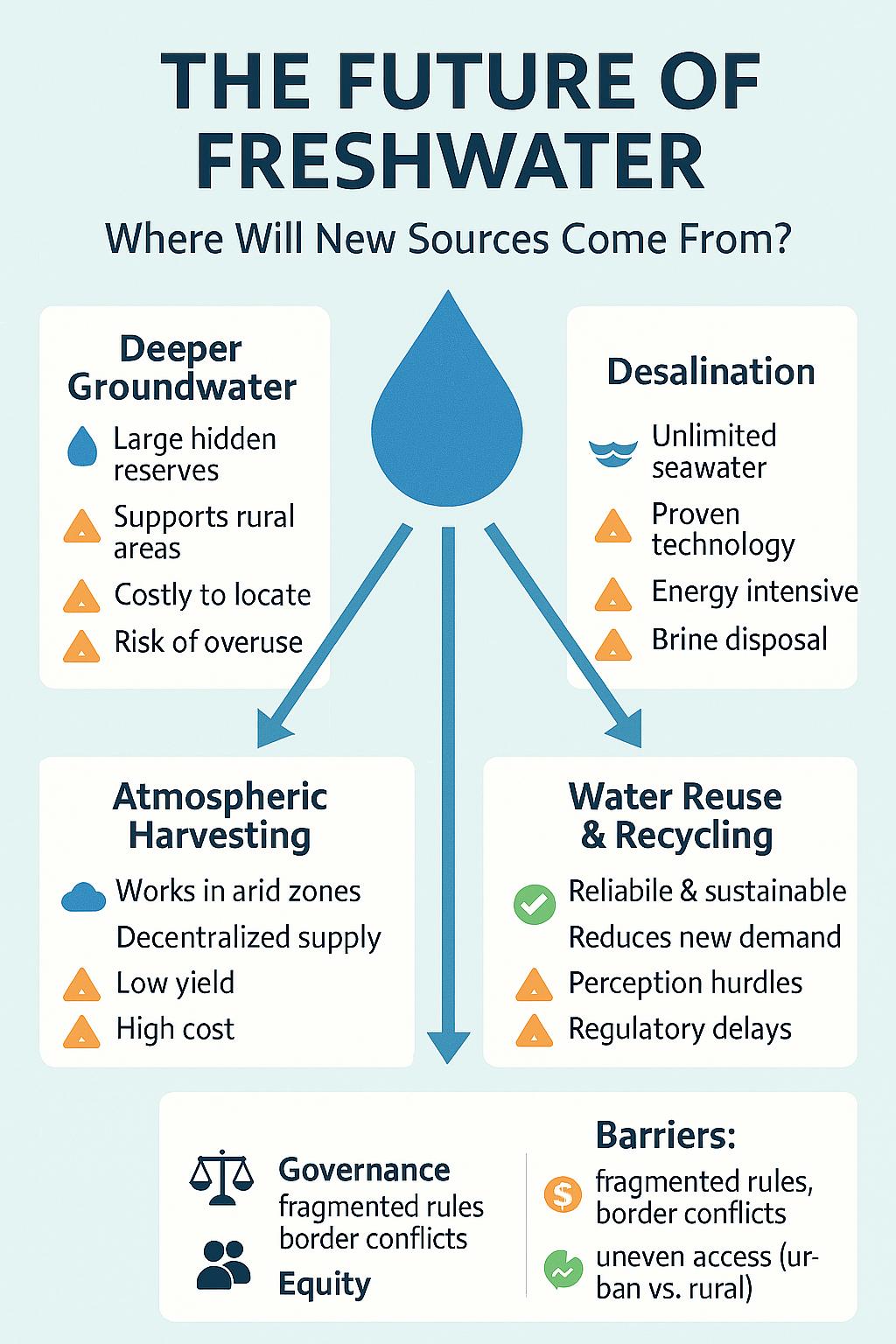
Geothermal and temperature resources
We have developed a proxy temperature measurement using our ADR radiowaves. When a pulse is transmitted into the ground it is reflected, at least in part, by boundaries between materials with contrasting dielectrics. Water has a very high dielectric permittivity (Er = 80) whereas host rocks including sediments, granites, metamorphic rocks all have permittivity values of <15. This natural difference makes water an ideal target for the pulsed radiowaves. A key to measuring relative temperature changes with depth is that a materials dielectric properties typically change with changing temperature. Accordingly, this characteristic can be utilized to help measure temperature changes with depth.
Download our presentation of simulations of our capabilities in typical geothermal environments.
Fieldwork was conducted in New Zealand at the Wairakei Geothermal Field. Here is a copy of our findings.
Multiple methods are now used by Adrok to measure relative temperatures at depth beneath the surface. One method is derived from the Stefan-Boltzmans’s Law as described below:
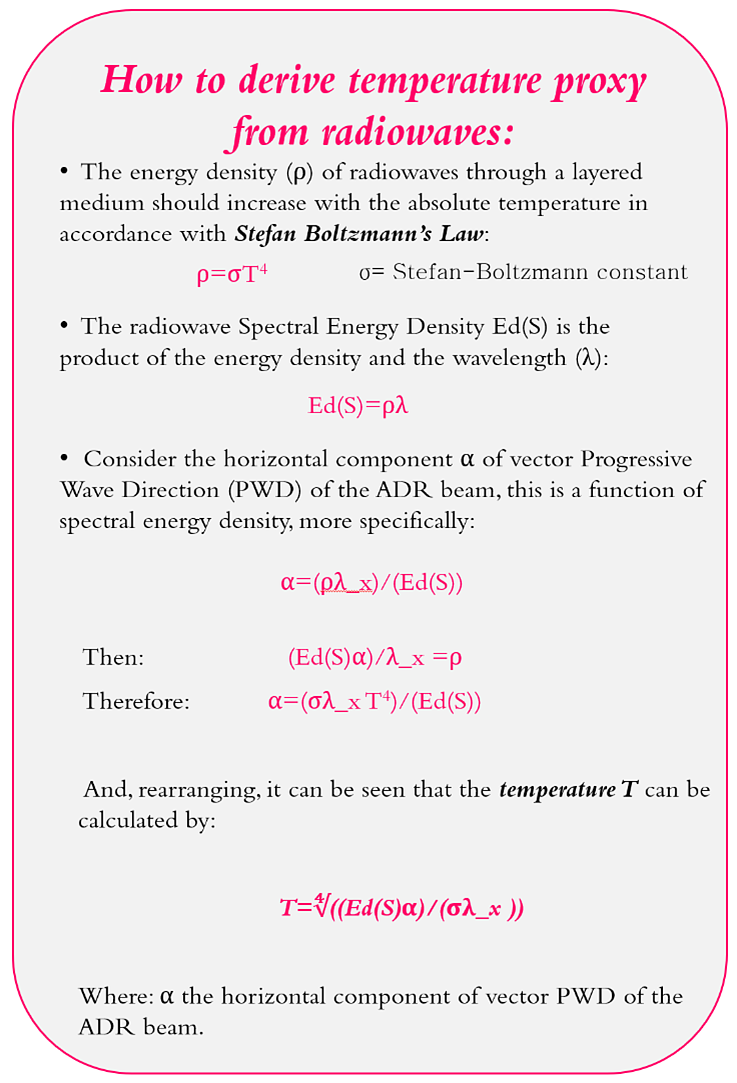
A recent project in Cornwall, UK, demonstrated that heat can also be detected using the pulsed radiowaves' energy readings. Here, we measure the variations within the energy returns of the ADR signal.

Intense troughs of Energy (E) Gamma below a baseline of 0.9990 correlate with known levels of temperature anomalies in the subsurface.
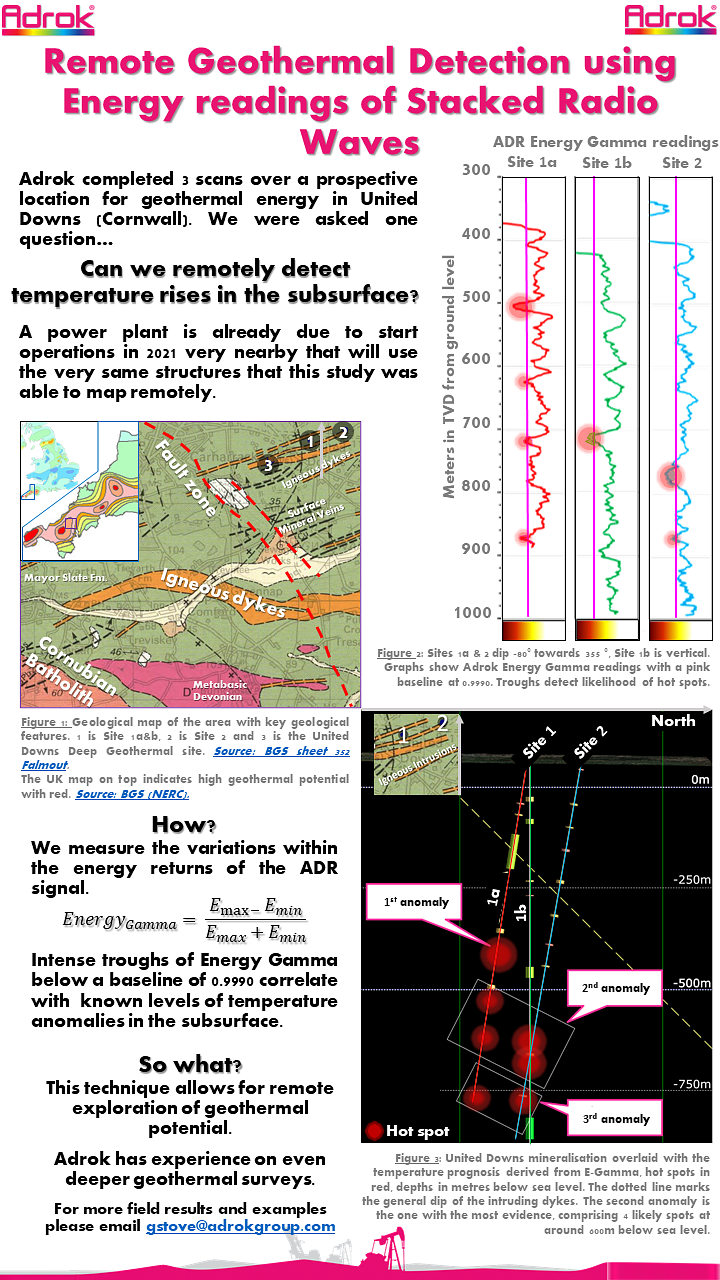
Shallow sub-seabed targets
ADROK® Revolutionizing Subsea Exploration Advanced Subsurface Imaging for Offshore Energy, Renewables & Beyond
High-resolution. Cost-effective. Environmentally friendly.The Adrok Subsea scanner is deployed from an ROV and is controlled remotely from the survey vessel. This allows the survey team to perform data acquisition and obtain other ROV and survey data.
Once all data has been collected it is transferred to and processed at Adrok’s headquarters in Edinburgh, Scotland. The data is processed using our own patented software and our findings are presented in detailed reports. Finally, our data is provided to our clients for integration into their datasets.
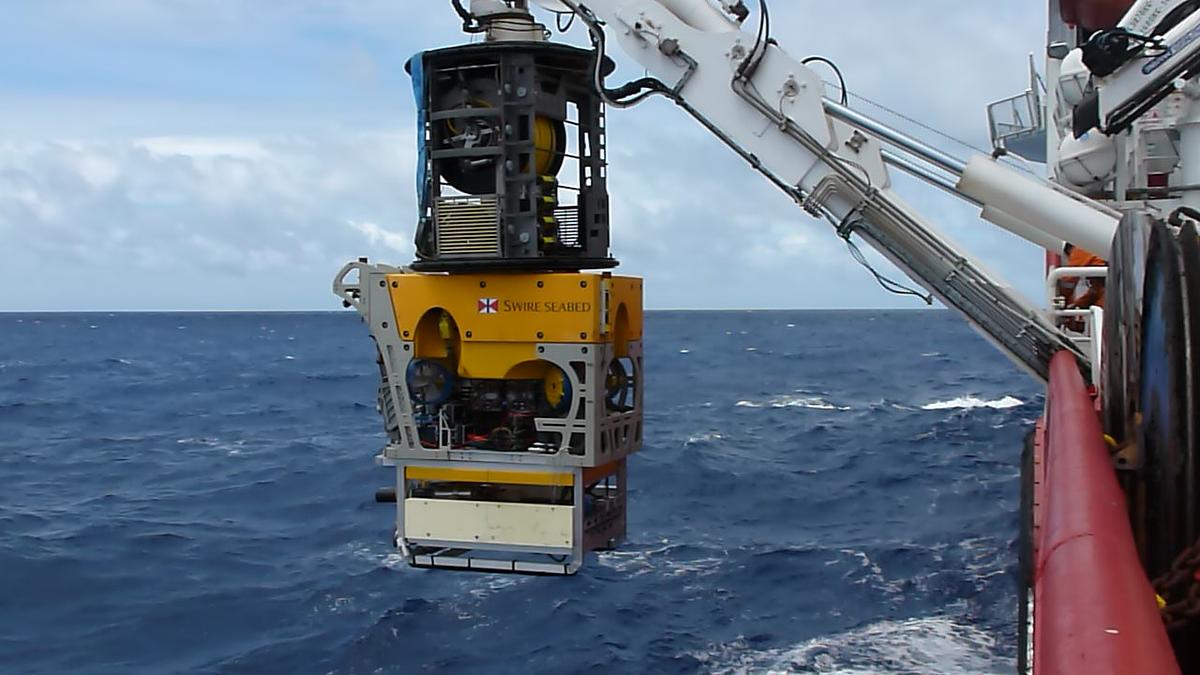
Subsea Applications
✅ Hydrocarbon Exploration Delineate oil & gas prospects with lower risk and greater clarity.
✅ Offshore Wind De-risk monopile and jacket foundation sites by imaging buried channels and hard strata.
✅ Carbon Capture & Storage (CCS) Assess the geological integrity of storage sites and monitor plume migration over time.
✅ Geohazard Detection Identify potential landslides, gas pockets, or voids before they become risks.
✅ Subsea Infrastructure Planning Support pipeline and cable route design with precise terrain and subsurface profiles.
✅ Marine Archaeology Exploring seabed surface and subseabed for sunken treasures!
